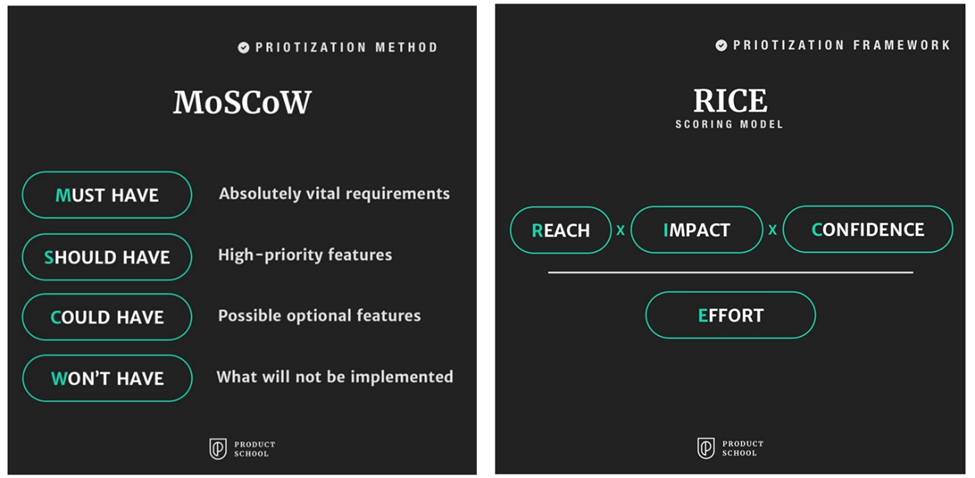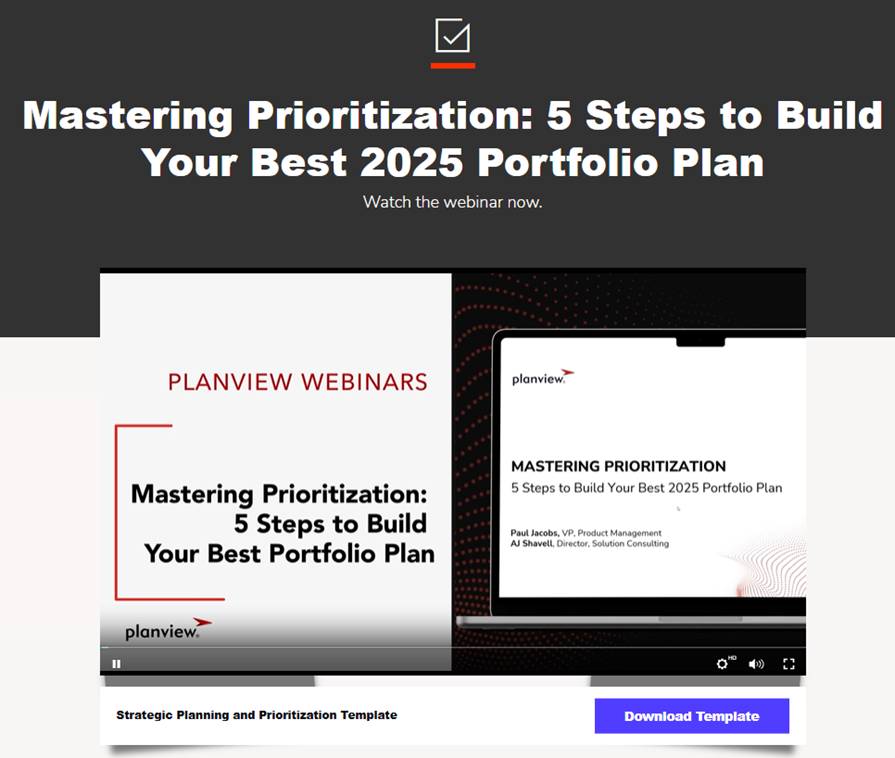As you look to build your plans for 2025 and beyond, how will you decide what you will work on next?
It is not an easy task to determine what to work on next, especially when you are also trying to determine if you are providing the most value to the organization, You are most likely dealing with a lot of varying opinions of what is “the most important” next big thing.
Building rigor around planning and prioritization takes time and proper change management to implement these practices effectively. Here are a few ways you can use Organizational Change Management when introducing prioritization:
- Define the WHY at a role-based level: Just like any other change, the individual needs to understand the WHY. Bring awareness to the pain points the organization is feeling and balance those with HOW planning is going to help fix those pain points. Meet your audience where they are and communicate how dedication to planning and prioritization will benefit them on an individual level and connect it back to the high-level outcomes. Try utilizing lessons learned to build the WIIFM.
- For example, have you previously put X number of hours into a project that was never implemented because it wasn’t properly vetted? Turn those hours into dollars to create an impactful WHY message.
- Establish Clear Success Metrics: Ensure alignment to set realistic, measurable goals. As you continue to test and learn, don’t forget to give yourself grace when setting goals. For example,
- are you able to bring average capacity down from overwhelming levels to manageable workloads through ruthless prioritization? Maybe it’s only 1% to start, but it’s still a trackable metric. Perhaps leading to a happier, more productive workforce that is proactive instead of reactive? How will better planning benefit YOU?
- are you able to track the % of projects completed on-time/budget before and after planning ceremonies were initiated?
- Clearly Communicate: Transparent communication to all stakeholders will be key to maintaining support. Communicate the benefits as well as the risks - What will happen if you continue on without an internal prioritization framework? Best Practice: Communications should come from leadership to increase the messaging buy-in and visibility.
- Provide a Feedback Loop - Don’t forget to survey your teams early. For example, gather their input on decision-making criteria. Provide opportunities for open and honest feedback and/or listening sessions with leadership. Planning and prioritization are ongoing activities and not set-it-and-forget-it processes. Continue to gather feedback for future enhancements and build excitement around new releases and ceremonies. Don’t be afraid to share your success and celebrate your wins.
Will you use a fancy spreadsheet with crazy calculations in the background to help you determine your costs or resource allocations? Is it also a living workbook that you share with others and hope they don’t accidentally delete something important?
The good news is there are many prioritization methods and frameworks, like MoSCoW or the RICE scoring system, to help get started. Some organizations, have even created their own complex scoring models, but no matter what attributes you use to prioritize, the act of planning and selecting above-the-line work, can still cause some heartburn among some.

These manual processes could take hours, or even weeks, to get the right people in the room to review and finally approve plans. Then, you are being asked, “Why did Bob’s get approved and not my new project/enhancement?!”
Will you need crowd control after you release your plans because not everyone is going to get what they want?
Are you left wondering, “Did we make the right decisions?”
I’ve been there. I know it’s rough, but I promise there is a better way!
Planning is the key to focusing on what matters. Understanding how to get started with planning in your organization can allow you to adopt a better planning process to realize benefits at each level.
If you are looking to get out of “spreadsheet hell”, conduct your planning in a single source of truth, and empower your organization with a better planning and prioritization process, we can help with our Investment & Capacity Planning (ICP) capability, in Planview Portfolios.
ICP can provide a mechanism to collect all potential and existing investments for prioritization and assessment before the overall portfolio plan is approved. As part of this, planners can create and compare various what-if scenarios.
By enabling the ICP capability you can:
- Evaluate alternate plans and scenarios to help you make stronger strategic decisions.
- Learn what to fund and where to allocate your capacity.
- Accurately forecast and estimate the real value of your investments.
- Bring visibility to your portfolio plans, funding, capacity and work to prioritize demands in line with strategic goals.
- Gain clear strategic objective alignment and understandable tracking, status and progress.
Ready to learn more? We have brand new content available in our Customer Success Center to help you get started and even set up ICP. Here are a few more of my favorite new resources:

Too much to handle on your own? Don’t worry, we’ve got your back! Let our experts help you implement ICP.
Are you looking to learn from others who have successfully implemented planning and prioritization in their org?
➡ Check out our customer stories.
No matter your prioritization framework, don’t forget the OCM!
With Planview, you can!
❄ Happy Holidays and thank you for being a part of our Planview Community! I can’t wait to learn from you all and continue to expand our change management offerings. I will be back in the New Year with a new bi-weekly Thursday blog cadence.
Cheers,
Stephanie, Your OCM Enthusiast
